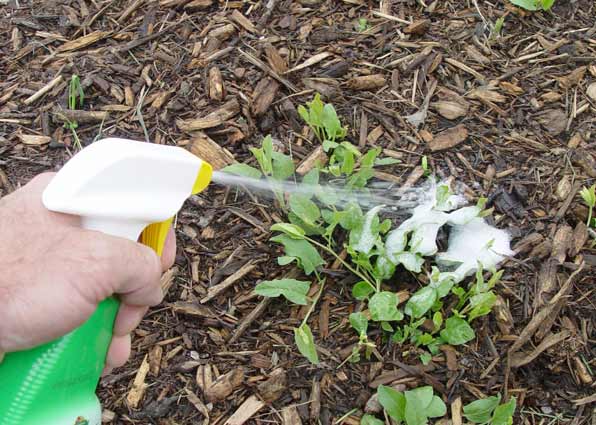Why You Should Never Let a Weed Go to Seed
Weeds in your garden are not only unsightly, they also are the source for more weeds to invade. Prevent new weeds from growing with Preen Weed Preventers.

Lots of products help control the bane of gardeners everywhere – weeds. But how well you get the job done depends on whether you’re using the right product for what you’re trying to accomplish.
One trip-up can happen when it comes to buying a weed killer vs. a weed preventer. Weed killers – also known as herbicides – will kill existing weed plants. Some kill broad-leaf weeds in lawns without harming grass, some kill grasses but not broad-leaf plants, and some kill pretty much anything green. What they don’t do, however, is stop new weeds from coming up.

When bare soil is left behind where a dead weed was growing, weed seeds capitalize on the opening – often within days or after the first rain. That happens because weed seeds are often buried in the soil waiting for sun, rain, and an opening to sprout, or new ones blow in or are carried in on insects and bird feathers. Digging in your soil can also make them surface.
Weed preventers such as Preen, on the other hand, target weed seeds, not existing weeds.
When Preen Garden Weed Preventer granules are scattered over the top of mulch or soil and lightly watered, a barrier forms that keeps many of the most common weeds from germinating and growing. The list includes chickweed, crabgrass, henbit, lambs quarters, prostrate knotweed, purslane, and dozens of other broad-leaf and grassy weeds – but the weeds controlled list will vary depending on the Preen product you choose. Original Preen Garden Weed Preventer product prevents weeds for up to three months before a new application is needed. Preen Extended Control Weed Preventer adds a second ingredient that lengthens the active time to up to six months and is primarily for use in landscape beds with trees, shrubs, and listed perennials.

Preen forms a weed barrier beneath the soil when watered in, so weed seeds beneath the soil cannot sprout.
What weed preventers don’t do is kill existing weeds – or most other plants for that matter. That’s why these can be applied in garden beds to stop new weeds from growing among your existing plants. It’s important to read the product label to determine plant compatibility and the specific weeds controlled and always consult the product’s Use Directions. If your beds or lawn are already overrun by weeds, the weeds must first be pulled or killed with a weed killer. Then a weed preventer can be used to stop a new weed infestation. If you get the weed preventer down early enough each spring before the weeds have started growing, you will minimize your work in an effort to enjoy a weed-free landscape.
One advantage to using weed preventers to keep beds free of weeds is that you don’t see weeds in the first place. Weed killers can be effective, but they leave behind dead, brown plants that can become an eyesore and need to be pulled to clear an area.